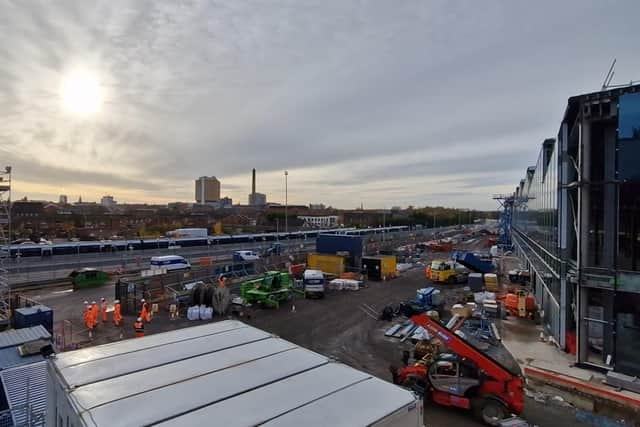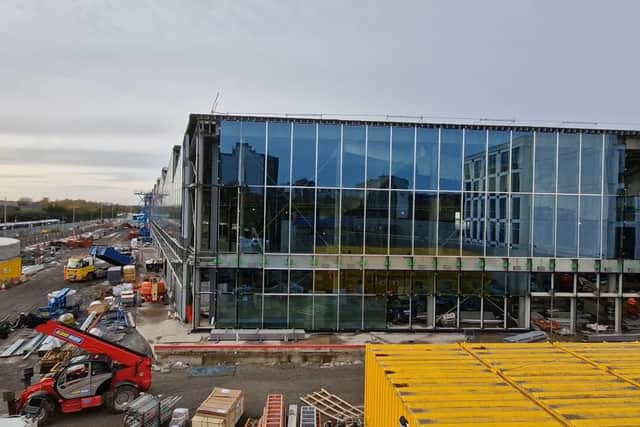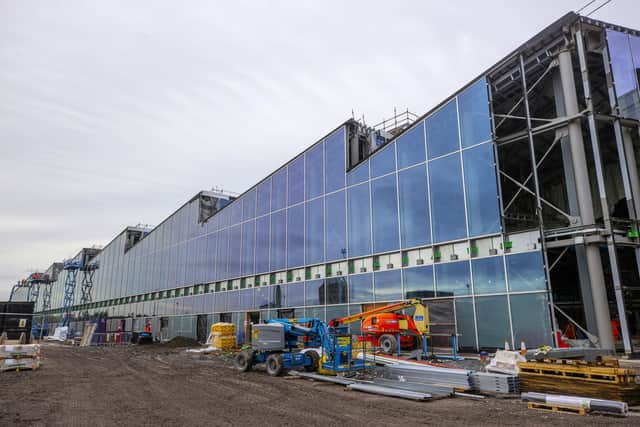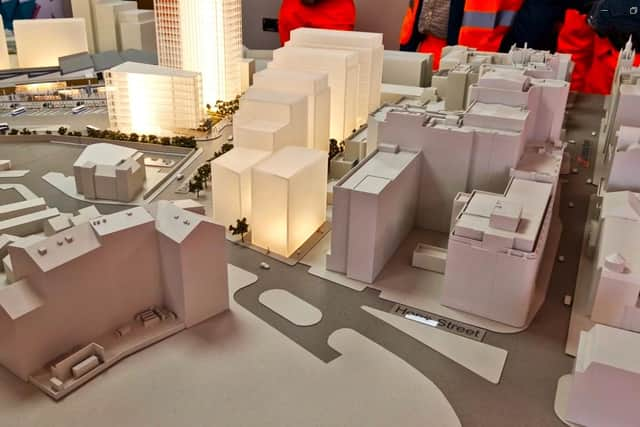First-ever footage of the colossal replacement for Great Victoria Street Station in Belfast - now renamed Grand Central Station and due for completion in one year
and live on Freeview channel 276
Translink opened up the building site which in a year’s time will open as Belfast Grand Central Station, replacing the old city’s Great Victoria Street bus and rail station.
The size is truly vast; Chris Conway, the CEO of Translink, said that it will be about 10 times the size of the old station, which is due to be flattened once the new one is complete.
Advertisement
Hide AdAdvertisement
Hide AdIt will be the biggest bus or rail station on either side of the border, eclipsing Dublin’s Connolly Station.


The development is so big that it means basically re-designing a large chunk of the city centre.
For one, the new station is no longer on Great Victoria Street.
Instead, it is being built on derelict Translink-owned land at a new location off Durham Street – a whole block over to the west.
Advertisement
Hide AdAdvertisement
Hide AdThis will mean a slightly longer walk from the city centre to the rail platforms, estimated by one of the project bosses as perhaps one extra minute.


However, this is still closer to the city centre than the old, mis-named Central Station (which has itself since been rebranded Lanyon Place as part of this whole overhaul of the city’s rail network).
The land which the new station is being built on was once used for warehousing and as a railhead for freight, but had been disused for some time.
When finished, Grand Central will have two floors instead of the old single floor, 26 bus bays instead of 15, and eight train platforms instead of four.
Advertisement
Hide AdAdvertisement
Hide AdAnd in place of the old station are planned to be new commercial towerblocks, which may take up to 15 years to be fully realised, as well as a new public plaza called Saltwater Square.


Meanwhile, the area surrounding the new station is being referred to by Translink as Weavers Cross (in tribute to the linen-weaving factories which formerly stood there).
The old station is still running for the time being, but next summer it is expected to shut while workers re-align the railway lines away from the old station towards the new one.
This will mean about 12 weeks of substitute bus services.
But once the new station is up and running, the idea is that demand will rise to fill the new capacity.


Advertisement
Hide AdAdvertisement
Hide AdFor instance, it is hoped that the current cross-border Enterprise service, running from Belfast to Dublin about once every two hours, will become an hourly service.
Consultations into the new plans began in 2015, and building work started in 2020.
So far, say the project bosses, it is more or less on budget and on schedule – a far cry from the other major recent building project in Belfast, the new University of Ulster campus, which was years late and over £100m over-budget.
Mr Conway said: “So what are we building here? It will be the largest integrated transport hub on the island of Ireland.
Advertisement
Hide AdAdvertisement
Hide Ad"It will cater for over 20 million passenger journeys a year.
"When you consider the station, the railways works we’re doing all the way out to Adelaide [in south Belfast], the resignalling we’re doing all the way around Lanyon Place, then you look at the master development we’re doing around Weaver’s Cross it is probably the biggest infrastructure project we’ve taken on in Belfast since the Westlink was built.”
The Westlink is a motorway running through the city from north to south, which was planned in the 1960s then opened in the early 1980s.
It was bedevilled with problems, largely stemming from the Troubles, which meant much less motorway ended up being built than was originally intended.
Advertisement
Hide AdAdvertisement
Hide AdAll the same it was a massive undertaking, and involved redrawing the map of Belfast, cutting a swathe through the city to make way for the lanes.
In terms of workers, yesterday there were around 180 on site, plus another 50 or so in offices. All told though, the project will have employed about 500 people.
The cost has been variously cited as £175m and £200m.
It was modelled, at least in part, on King’s Cross Station in London, an 18th century station which was given a massive re-fit in 2012.
Mr Conway noted that two nearby communities, Sandy Row and the Grosvenor Road / Lower Falls, are among the most deprived in the city, and he is hopeful that they will feel a knock-on benefit from the project, much as the neighbourhoods around King’s Cross did.